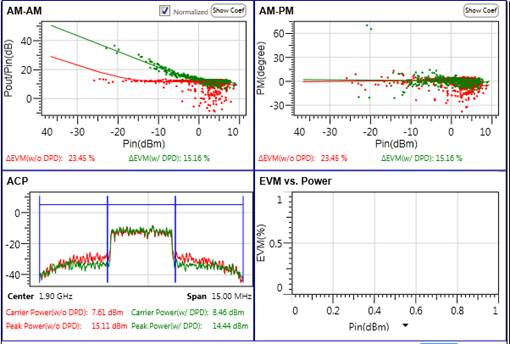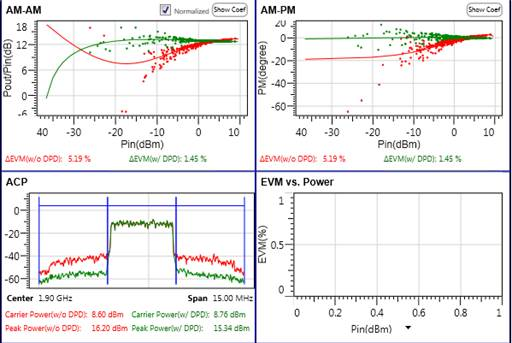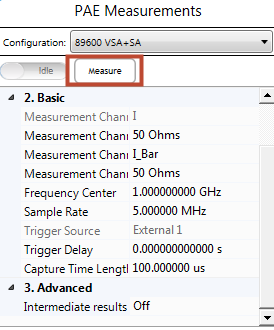
Once the measurement begins, the detailed information will be displayed in the Log view at the bottom of the window as shown below.


This section introduce how to execute the PAE measurement test and how to view the measurement results. Follow the procedure below to execute the measurement and view the measurement results.
Viewing the Measurement Results

Once the measurement begins, the detailed information will be displayed in the Log view at the bottom of the window as shown below.


The default Delay setting in Envelope Tracking block may not be the optimal value for the current instruments/DUT connections. So the PA output performance (AM-AM, ACP) may be poor. Further timing alignment between the RF Signal Generator and the Envelope Signal Generator is required.
Timing alignment is to synchronize the input signal of the PA (the output of the RF Signal Generator) with the input voltage of the PA (the output of the Envelope Signal Generator) in time domain. This can be achieved by performing normal envelope tracking. Refer to Example ET Measurement to know how to handle the envelope tracking to finish the alignment of ETPS output and RF signal. This is must before making meaningful PAE measurement.
There are two methods:
Manual: Adjust the Delay and Step setting in Envelope Tracking block manually with an oscilloscope connected to the Envelope Signal (ETPS output) and RF Signal Generator and observe the signals alignment.

By selecting the Pre-Align with AM-AM for Auto-Align check box in the Envelope Tracking block, you can find a possible better initial delay value with the measured AM-AM results, but this may take longer time. After the auto-alignment is finished, the Delay setting in Envelope Tracking block is updated automatically.
If the related settings (for example, sample rate, IQ delay, trigger delay in Generator instruments and so on) are changed and applied, it is recommended to do the timing alignment again.
Figures 1 and 2 show the DPD results before and after timing alignment respectively.

Figure 1. DPD result before Alignment

Figure 2. DPD result after Alignment
Use DPD performance as a criteria to find whether RF signal and ET signal is aligned well or not.

In the measurement view, there are two result windows: PAE vs Time and PAE vs PA Power Out.

After PAE measurement is done, click the Measure button to view the results.

Or more result windows if intermediate result is set to “On” state.
